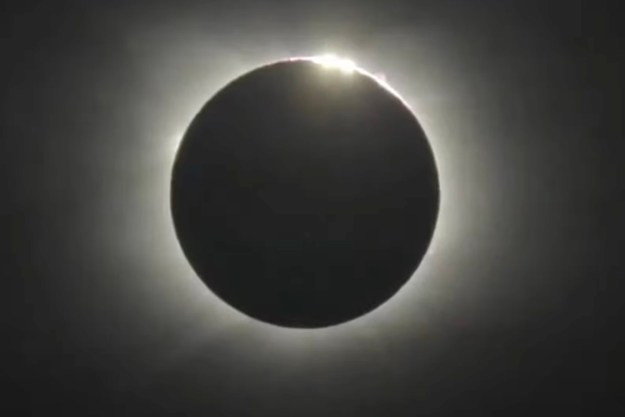Huge crowds gathered across parts of the Americas on Saturday to witness the stunning phenomenon of an annular solar eclipse.
An “annular” eclipse occurs when the moon passes between the sun and Earth at a distance where, when viewed from Earth, it doesn’t completely obscure the sun. The result is a large, bright ring in the sky, commonly called the “ring of fire.”
The maximum obscuration of the sun could be witnessed in parts of nine U.S. states, namely Oregon, California, Idaho, Nevada, Utah, Arizona, Colorado, New Mexico, and Texas — provided there were cloudless skies, of course. Those close to the zone of maximum obscuration could also enjoy a partial eclipse.
For anyone unable to travel to a location where they could see the full eclipse, NASA showed a live stream that included the gorgeous “ring of fire” effect as the moon passed between Earth and the sun.
You can see the eclipse reach its peak in the video below:
Places inside the viewing zone included notable locations such as Monument Valley in Arizona, Bryce Canyon in Utah, and Mesa Verde in Colorado, but those who were keen to escape the crowds will have sought out quieter spots along the viewing zone.
Saturday’s eclipse was also visible in parts of Central and South America.
Folks viewing the spectacular celestial event wore special eclipse glasses or used a handheld solar viewer to protect their eyes from the sun’s harsh glare.
The next eclipse — a total one where the moon completely obscures the sun for a brief moment — takes place on April 8 next year. This will also be viewable across parts of the U.S. However, the next annular solar eclipse won’t be viewable from the U.S. until 2039.
Editors' Recommendations
- NASA video maps all 72 flights taken by Mars Ingenuity helicopter
- Watch NASA begin testing its Orion capsule for lunar flyby
- The first views of the eclipse are coming in, and they’re stunning
- What kind of view will ISS astronauts get of the solar eclipse?
- The solar eclipse isn’t the only thing to enjoy in the skies in April

